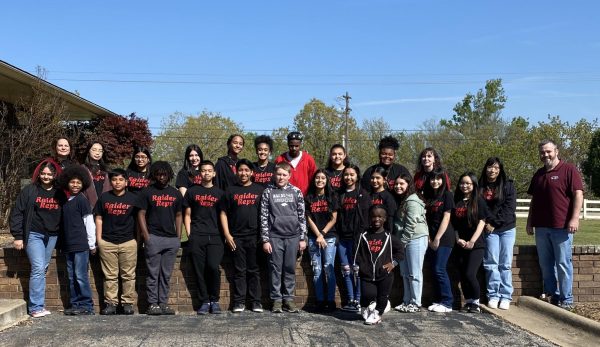PARCC Testing Proves Stressful but Successful
Sitting in front of computers, students drifted off into another realm. With their eyes half open, their heads propped up on their hands, these cranky creatures struggled to grasp consciousness. This was the first round of state testing in April. Another round, the End of Year or EOYs, struck just one month later.
Arkansas adopted the Common Core curriculum in the 2011-2012 school year but did not transition from Benchmark testing to Common Core assessment until this year.
“It makes sense to have a common curriculum that is a standard nation-wide,” Principal Watkins said.
Ms. Ehnle, instructional facilitator, agreed.
“Common Core standards focus on critical thinking, which helps students become true problem solvers,” Ms. Ehnle said. “Having common standards throughout the U.S. ensures that all students receive the same level of education no matter where they live or the school environment.”
The testing company that Arkansas chose was PARCC or “Partnership for Assessment of Readiness for College and Careers.” PARCC testing and Benchmark are very different. PARCC testing requires students to pull evidence to support their choices on multiple choice questions. It is also fully computerized. Principal Watkins fought to have the tests taken on desktop computers to lesson potential technical difficulties.
“Using a regular, larger screen versus a mini-computer with a small screen makes a world of difference,” Principal Watkins said.
Even the teachers needed to prepare for the transition to the Common Core curriculum and PARCC assessment. Ms. Ehnle worked with each department during Professional Learning Committee (PLC) meetings to focus on new expectations.
“Teachers worked together on creating Common Core type lessons and using online PARCC practice tests,” Ms. Ehnle said. “Also, students had scheduled time in the library to go through the tutorials to fully understand the PARCC testing features.”
For literacy, students read passages, answered evidence-based multiple-choice questions, and wrote three constructed responses: Narrative, Literary Analysis, and Research Simulation. For math, students had to justify how they came up with their answers. Gone are the days of quickly skimming the question, selecting a random answer, and moving on.
When polled, seventh graders said that they mainly struggled with concentration, reading long passages, and staying awake during the 90-minute sessions. Eighth graders cited having too much extra time leftover and having to provide evidence.
“I have a hard time focusing being in the same place because I get bored really quick,” Jaleesa Llanes, 8th, said.
Ninth graders had a hard time understanding the questions, writing constructed responses, and taking the math tests.
“One of the biggest challenges of taking the PARCC was having to show my work on the math part because it was complicated,” Diana Matamoros, 9th, said.
Bebe Chokbenboun, 9th, also struggled with math.
“The math section was horrible!” Bebe said. “There were things on there I never even knew existed. I felt good with the literacy section but wanted to cry for the math.”
To help prepare students, teachers designed tasks that required critical-thinking and problem-solving skills. Language Arts and Social Studies teachers upgraded their tests to include “Part B” questions which required students to provide textual evidence to support each Part A question. Other teachers gave students in-class time to go to the PARCC website.
“My teacher prepared me for the PARCC by giving me practice tests that looked like the real PARCC,” Jose Salas, 8th, said.
Students had different levels of confidence when it came to taking the computerized assessment.
“On a scale of 1 to 5, I’m a zero because I did not feel comfortable taking the test,” Erica Salinas, 9th, said. “It was way too hard. I know I’m not Albert Einstein, but I’m not dumb like Patrick Starr either.”
Others felt more confident in facing the new challenge.
“I would be a 4 out of 5 because it’s easier on the computer rather than on paper,” Bao Ha, 9th, said.








